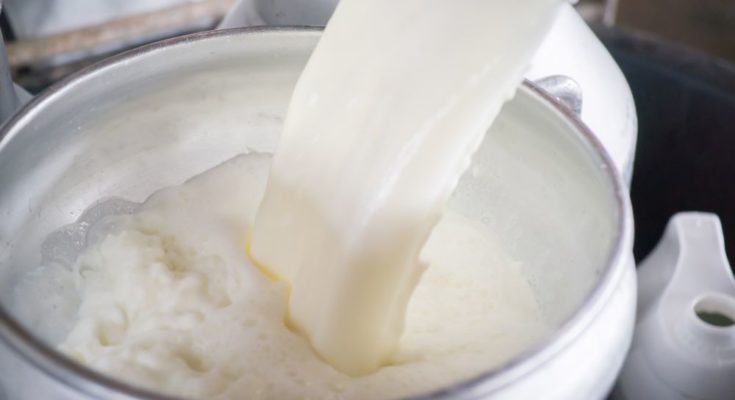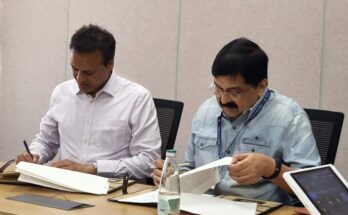India’s dairy industry is one of the fastest growing sectors in the world and has set the goal to double its processing capacity from 53.5 million metric tonnes (MMT) to 108 MMT by 2025. The government in its roadmap for 2025 for the dairy sector also aims to increase value added products from 23 percent to 40 percent and India’s exports share in the world from 0.36 percent to 10 percent, Atul Chaturvedi, Secretary, Department of Animal Husbandry & Dairying, Government of India said today.
Addressing a FICCI webinar on ‘Development of Indian Dairy Sector’, Chaturvedi said that the dairy sector was facing a crisis before the onset of the pandemic. However, the industry was able to turn the COVID-19 crisis into an opportunity. There was an improvement in supply of milk substantially by cooperatives and the average liquid milk consumption by cooperatives was higher during the period. He added that average procurement price of milk also increased, which helped 1.7 crore farmers.
Chaturvedi said that the Indian dairy was Rs 10 lakh crore industry with significant growth potential and highlighted the five key investment opportunities for the private sector. It included production and supply of affordable compound cattle feed; enhancing chilling infrastructure by setting up new bulk milk coolers (BMCs); setting up processing infrastructure; enhancing processed milk distribution capacity; and enhancement of D2C milk supply across top consumption hubs.
Addressing the webinar, Siraj Hussain, Former Secretary, Union Ministry of Food Processing Industries and Ministry of Agriculture, Govt of India said that the share of eastern India in milk processing was very less and urged the government to look at ways to correct this situation. He added that FSSAI should engage the private sector to compile data as there is no information available on milk processing capacity of the dairy sector.
Hussain pointed out the urgent need to spread awareness about the use of processed milk. Owing to several myths related to the use of processed milk, there is no demand for it in certain parts of the country leading to closure of private dairies. He added that augmenting domestic demand for processed milk by organising campaigns is crucial.
In his presentation on Indian dairy sector, Mohit Bhasin, Partner, KPMG India said, “Despite being the largest producer, India lags behind in per capita consumption of milk, share of processed milk products and yield per animal. However, the dairy sector is all set to move to next level in processed food segment driven by quality and product innovation.” He added that processed milk, value added milk products both traditional and non-traditional and healthy beverages could become the growth segments.
Speaking on the dairy value chain and its benefits to the farmers, Dr RS Sodhi, Managing Director, Gujarat Co-operative Milk Marketing Federation (GCMMF), popularly known as Amul, said, “Dairy sector provides not only nutrition but also sustainable source of livelihood to 70 million plus farmers involved directly in dairying. Dairy sector is all set to move to the next level by improvement in productivity, building brand India in milk segment, product innovation and increasing penetration of organised segment.” He added that efforts should be made so that dairy can become an attractive profession for future generations.
Highlighting the importance of fodder availability for dairy cattle, Dr Prashant Shinde, Commercial Director-Dairy Feed Business, Cargill India said, “For future growth of the milk output, it is important to ensure availability of feed and fodder, expand creation of silage preparation, promote use of compound cattle feed and educate farmers on good dairy farming practices.” He added that use of compound feed cannot only increase milk yield but also enhance net profitability of dairy farmers.
Figuring out the potential of dairy industry for economic growth in rural India, Ranjith Mukundan, CEO & Co-founder, Stellapps Technologies said, “The dairy sector holds immense potential to bring the rural economy back on track. High-end technologies can transform the dairy value chain by unlocking access to relevant insights, products and services at the right time to smallholder farmers.” He added that quality and traceability solutions can make India an export hub in dairy and data driven decisions in dairy farming could lead to building smart dairy value chain.
Stressing on the need for a growth roadmap, Dilip Chenoy, Secretary General, FICCI said, “The objective of the session was to develop the roadmap for transforming the initiatives into well directed efforts for development of Indian dairy sector to enhance milk production for doubling farmers’ income, promoting entrepreneurship and value creation along with dairy value chain to mitigate effects of COVID-19 on dairy sector while establishing national milk brands globally.
A FICCI paper on ‘Development of Dairy Sector in India’ was also released during the webinar.





Since the white revolution, milk production and consumption have gone up considerably in the country, resulting in better health and hygiene all over the country. With improved milk availability across the nation, it is possible to bridge the gap between demand and supply. These are proud moments in our country.